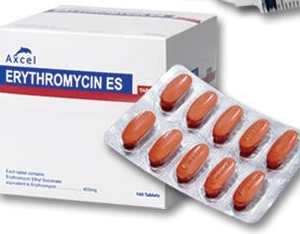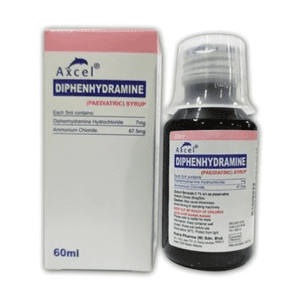Description
Contents
Ipratropium bromide.
Indications/Uses
ATROVENT is indicated as a bronchodilator for maintenance treatment of bronchospasm associated with chronic obstructive pulmonary disease, including chronic bronchitis and emphysema.
ATROVENT is indicated, when used concomitantly with inhaled beta-agonists in the treatment of acute bronchospasm associated with chronic obstructive pulmonary disease including chronic bronchitis and asthma.
250 mcg/2 mL Inhalation soln: ATROVENT is indicated, when used concomitantly with inhaled beta-agonists in the treatment of reversible airways obstruction as in acute and chronic asthma.
ATROVENT is indicated, when used concomitantly with inhaled beta-agonists in the treatment of acute bronchospasm associated with chronic obstructive pulmonary disease including chronic bronchitis and asthma.
250 mcg/2 mL Inhalation soln: ATROVENT is indicated, when used concomitantly with inhaled beta-agonists in the treatment of reversible airways obstruction as in acute and chronic asthma.
Dosage/Direction for Use
The dosage should be adapted to the individual requirements and the patients should be kept under medical supervision during treatment. It is advisable not to exceed the recommended daily dose during either acute or maintenance treatment.
If therapy does not produce a significant improvement or if the patient’s condition gets worse, medical advice must be sought in order to determine a new plan of treatment. The patient should be instructed that in the case of acute or rapidly worsening dyspnoea a physician should be consulted immediately.
The following dosages are recommended: 0.025% Nebuliser soln: (20 drops = about 1 mL; 1 drop = 0.0125 mg ipratropium bromide anhydrous).
Maintenance treatment: Adults (including elderly) and adolescents over 12 years of age: 2.0 mL (40 drops = 0.5 mg ipratropium bromide anhydrous) 3 to 4 times daily.
Children 6 – 12 years: Because there is limited information in this age group, the following dose recommendation should be given under medical supervision: 1.0 mL (20 drops = 0.25 mg ipratropium bromide anhydrous) 3 to 4 times daily.
Children < 6 years of age: Because there is limited information in this age group the following dose recommendation should be given under medical supervision: 0.4 – 1.0 mL (8 – 20 drops = 0.1 – 0.25 mg ipratropium bromide anhydrous) 3 to 4 times daily.
Acute attacks: Adults (including elderly) and adolescents > 12 years of age: 2.0 mL (40 drops = 0.5 mg ipratropium bromide anhydrous); repeated doses can be administered until the patient is stable. The time interval between the doses may be determined by the physician.
ATROVENT can be administered combined with an inhaled beta-agonist.
Children 6 – 12 years of age: Because there is limited information in this age group, the following dose recommendation should be given under medical supervision: 1.0 mL (20 drops = 0.25 mg ipratropium bromide anhydrous); repeated doses can be administered until the patient is stable. The time interval between the doses may be determined by the physician.
ATROVENT can be administered combined with an inhaled beta-agonist.
Children < 6 years of age: Because there is limited information in this age group the following dose recommendation should be given under medical supervision: 0.4 – 1.0 mL (8 – 20 drops = 0.1 – 0.25 mg ipratropium bromide anhydrous); repeated doses can be administered until the patient is stable. The time interval between the doses may be determined by the physician.
ATROVENT can be administered combined with an inhaled beta-agonist.
Daily doses exceeding 2 mg ipratropium bromide anhydrous in adults and adolescents >12 years of age and 1 mg in children ≤ 12 years of age should be given under medical supervision.
250 mcg/2 mL Inhalation soln: Maintenance Treatment or acute attacks: Children 6 – 12 years of age: 1 unit dose vial (UDV); repeated doses can be administered until the patient is stable. The time interval between the doses may be determined by the physician. ATROVENT can be administered combined with an inhaled beta-agonist.
Daily doses exceeding 1 mg ipratropium bromide anhydrous in children ≤12 years of age should be given under medical supervision.
Children ≤ 6 years of age: Because there is limited information in this age group the following dose recommendation should be given under medical supervision: 1 unit dose vial (UDV); repeated doses can be administered until the patient is stable. The time interval between the doses may be determined by the physician.
ATROVENT can be administered combined with an inhaled beta-agonist.
500 mcg/2 mL Inhalation soln: Maintenance treatment: Adults (including elderly) and adolescents > 12 years of age: 1 unit dose vial (UDV) 3 to 4 times daily.
Acute attacks: Adults (including elderly) and adolescents > 12 years of age: 1 unit dose vial (UDV); repeated doses can be administered until the patient is stable. The time interval between the doses may be determined by the physician.
ATROVENT can be administered combined with an inhaled beta-agonist.
Daily doses exceeding 2 mg ipratropium bromide anhydrous in adults and adolescents > 12 years of age should be given under medical supervision.
Instructions for use: Please read the instructions for use carefully, to ensure correct administration.
0.025% Nebuliser soln:The recommended dose is to be diluted with physiological saline to a final volume of 3 – 4 mL and nebulised and inhaled until the solution is consumed. The solution should be rediluted each time before use; any residual diluted solution should be discarded.
Dosage may be dependent upon the mode of inhalation and the quality of nebulisation. The duration of inhalation can be controlled by the dilution volume.
ATROVENT Nebuliser Solution can be administered using a range of commercially available nebulising devices. Where wall oxygen is available the solution is best administered at a flow rate of 6 – 8 litres per minute.
ATROVENT Nebuliser Solution is suitable for concurrent inhalation with the Nebuliser Solution of the secretomucolytics ambroxol hydrochloride and bromhexine hydrochloride, or fenoterol hydrobromide.
ATROVENT Nebuliser Solution and disodium cromoglycate Nebuliser Solution should not be administered simultaneously in the same nebuliser as precipitation may occur.
Inhalation soln: The unit dose vials are intended only for inhalation with suitable nebulising devices and must not be taken orally or administered parenterally.
The unit dose vials of 1 mL are to be diluted with physiological saline up to a final volume of 2 – 4 mL or may be combined with fenoterol hydrobromide solution for inhalation.
ATROVENT solution for inhalation can be administered using a range of commercially available nebulising devices. Where wall oxygen is available the solution is best administered at a flow rate of 6 – 8 litres per minute.
ATROVENT solution for inhalation is suitable for concurrent inhalation with the secretomucolytics ambroxol hydrochloride solution for inhalation and bromhexine hydrochloride or fenoterol hydrobromide.
ATROVENT solution for inhalation in unit dose vials and disodium cromoglycate inhalation solutions should not be administered simultaneously in the same nebuliser.
1. Prepare the nebuliser for filling, according to the instructions provided by the manufacturer or physician.
2. Tear one unit dose vial from the strip.
3. Open the unit dose vial by firmly twisting the top.
4. Squeeze the content of the unit dose vial into the nebuliser reservoir.
5. Dilute with saline up to a final volume of 2-4mL.
6. Assemble the nebuliser and use as directed.
7. After use throw away any solution left in the reservoir and clean the nebuliser, following the manufacturer’s instructions.
Since the unit dose vials contain no preservative, it is important that the contents are used soon after opening and that a fresh vial is used for each administration to avoid microbial contamination. Partly used, opened or damaged unit dose vials should be discarded.
If therapy does not produce a significant improvement or if the patient’s condition gets worse, medical advice must be sought in order to determine a new plan of treatment. The patient should be instructed that in the case of acute or rapidly worsening dyspnoea a physician should be consulted immediately.
The following dosages are recommended: 0.025% Nebuliser soln: (20 drops = about 1 mL; 1 drop = 0.0125 mg ipratropium bromide anhydrous).
Maintenance treatment: Adults (including elderly) and adolescents over 12 years of age: 2.0 mL (40 drops = 0.5 mg ipratropium bromide anhydrous) 3 to 4 times daily.
Children 6 – 12 years: Because there is limited information in this age group, the following dose recommendation should be given under medical supervision: 1.0 mL (20 drops = 0.25 mg ipratropium bromide anhydrous) 3 to 4 times daily.
Children < 6 years of age: Because there is limited information in this age group the following dose recommendation should be given under medical supervision: 0.4 – 1.0 mL (8 – 20 drops = 0.1 – 0.25 mg ipratropium bromide anhydrous) 3 to 4 times daily.
Acute attacks: Adults (including elderly) and adolescents > 12 years of age: 2.0 mL (40 drops = 0.5 mg ipratropium bromide anhydrous); repeated doses can be administered until the patient is stable. The time interval between the doses may be determined by the physician.
ATROVENT can be administered combined with an inhaled beta-agonist.
Children 6 – 12 years of age: Because there is limited information in this age group, the following dose recommendation should be given under medical supervision: 1.0 mL (20 drops = 0.25 mg ipratropium bromide anhydrous); repeated doses can be administered until the patient is stable. The time interval between the doses may be determined by the physician.
ATROVENT can be administered combined with an inhaled beta-agonist.
Children < 6 years of age: Because there is limited information in this age group the following dose recommendation should be given under medical supervision: 0.4 – 1.0 mL (8 – 20 drops = 0.1 – 0.25 mg ipratropium bromide anhydrous); repeated doses can be administered until the patient is stable. The time interval between the doses may be determined by the physician.
ATROVENT can be administered combined with an inhaled beta-agonist.
Daily doses exceeding 2 mg ipratropium bromide anhydrous in adults and adolescents >12 years of age and 1 mg in children ≤ 12 years of age should be given under medical supervision.
250 mcg/2 mL Inhalation soln: Maintenance Treatment or acute attacks: Children 6 – 12 years of age: 1 unit dose vial (UDV); repeated doses can be administered until the patient is stable. The time interval between the doses may be determined by the physician. ATROVENT can be administered combined with an inhaled beta-agonist.
Daily doses exceeding 1 mg ipratropium bromide anhydrous in children ≤12 years of age should be given under medical supervision.
Children ≤ 6 years of age: Because there is limited information in this age group the following dose recommendation should be given under medical supervision: 1 unit dose vial (UDV); repeated doses can be administered until the patient is stable. The time interval between the doses may be determined by the physician.
ATROVENT can be administered combined with an inhaled beta-agonist.
500 mcg/2 mL Inhalation soln: Maintenance treatment: Adults (including elderly) and adolescents > 12 years of age: 1 unit dose vial (UDV) 3 to 4 times daily.
Acute attacks: Adults (including elderly) and adolescents > 12 years of age: 1 unit dose vial (UDV); repeated doses can be administered until the patient is stable. The time interval between the doses may be determined by the physician.
ATROVENT can be administered combined with an inhaled beta-agonist.
Daily doses exceeding 2 mg ipratropium bromide anhydrous in adults and adolescents > 12 years of age should be given under medical supervision.
Instructions for use: Please read the instructions for use carefully, to ensure correct administration.
0.025% Nebuliser soln:The recommended dose is to be diluted with physiological saline to a final volume of 3 – 4 mL and nebulised and inhaled until the solution is consumed. The solution should be rediluted each time before use; any residual diluted solution should be discarded.
Dosage may be dependent upon the mode of inhalation and the quality of nebulisation. The duration of inhalation can be controlled by the dilution volume.
ATROVENT Nebuliser Solution can be administered using a range of commercially available nebulising devices. Where wall oxygen is available the solution is best administered at a flow rate of 6 – 8 litres per minute.
ATROVENT Nebuliser Solution is suitable for concurrent inhalation with the Nebuliser Solution of the secretomucolytics ambroxol hydrochloride and bromhexine hydrochloride, or fenoterol hydrobromide.
ATROVENT Nebuliser Solution and disodium cromoglycate Nebuliser Solution should not be administered simultaneously in the same nebuliser as precipitation may occur.
Inhalation soln: The unit dose vials are intended only for inhalation with suitable nebulising devices and must not be taken orally or administered parenterally.
The unit dose vials of 1 mL are to be diluted with physiological saline up to a final volume of 2 – 4 mL or may be combined with fenoterol hydrobromide solution for inhalation.
ATROVENT solution for inhalation can be administered using a range of commercially available nebulising devices. Where wall oxygen is available the solution is best administered at a flow rate of 6 – 8 litres per minute.
ATROVENT solution for inhalation is suitable for concurrent inhalation with the secretomucolytics ambroxol hydrochloride solution for inhalation and bromhexine hydrochloride or fenoterol hydrobromide.
ATROVENT solution for inhalation in unit dose vials and disodium cromoglycate inhalation solutions should not be administered simultaneously in the same nebuliser.
1. Prepare the nebuliser for filling, according to the instructions provided by the manufacturer or physician.
2. Tear one unit dose vial from the strip.
3. Open the unit dose vial by firmly twisting the top.
4. Squeeze the content of the unit dose vial into the nebuliser reservoir.
5. Dilute with saline up to a final volume of 2-4mL.
6. Assemble the nebuliser and use as directed.
7. After use throw away any solution left in the reservoir and clean the nebuliser, following the manufacturer’s instructions.
Since the unit dose vials contain no preservative, it is important that the contents are used soon after opening and that a fresh vial is used for each administration to avoid microbial contamination. Partly used, opened or damaged unit dose vials should be discarded.
*The product images shown are for illustration purposes only and may not be an exact representation of the product.





